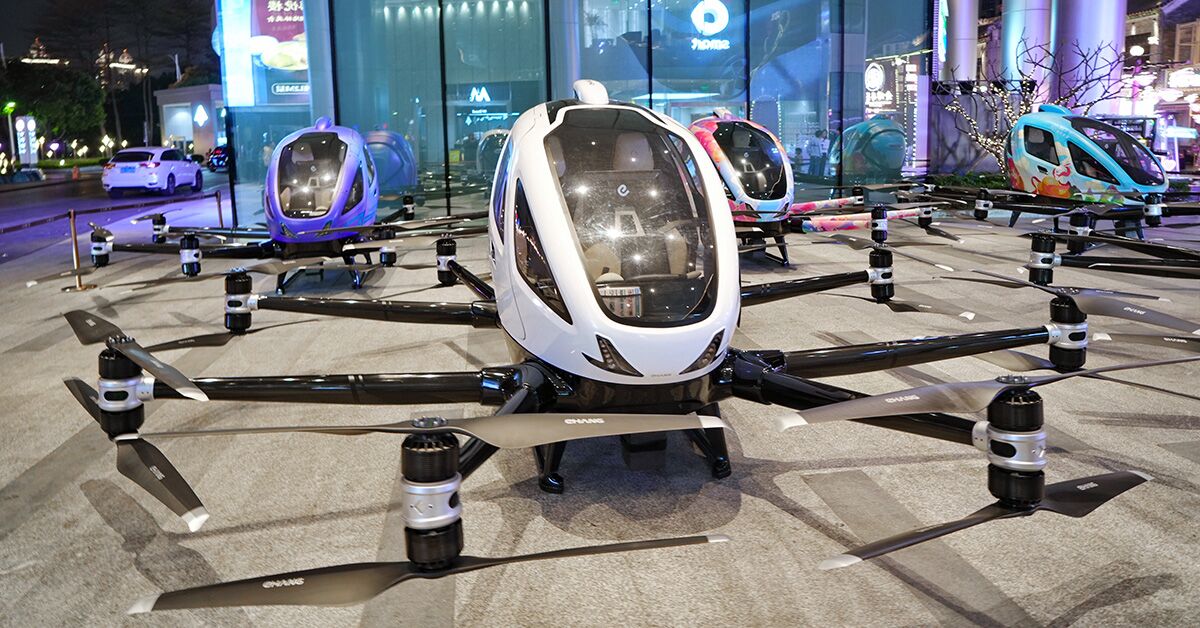By mid-2025, it should be possible to get from Málaga airport to Marbella in just 15 minutes via a drone taxi.
Report by Sophie Gatward-Wicks

The speculative science-fiction novels of the past that once portrayed a hyperbolic high-speed air fairing future are soon becoming our modern society. The surreal imagery of flying cars and AI machinery lie just around the corner, with Málaga intending to get its foot in the door ahead of the curve.
By this time next year, it should be possible to get from Málaga airport to Marbella in just 15 minutes via drone.
At first, the drones will be piloted, with aims to start test flights by mid-2025. By the medium term, the goals are to have pilotless drone taxis operating from Málaga, much like the self-driving cars currently in circulation in China, and certain American states.
The first test flights will be between Málaga AGP Airport and the GRX airport in Granada, with flight times expected to be 50 minutes between the two locations. These test flights are currently in the design phase, ensuring that they are compatible with traditional flight paths.
A ‘vertiport’ would be required to operate the drones, similar to a heliport for helicopters, and would be equipped with high-powered electrical charging points. This would be located in an annex terminal, though the possibility of repurposing one of the current terminals is being studied by Aena, who are looking for possible ground locations for the placement of the vertiport.
The Sur in English reports: “Enaire, the public company which manages air navigation in Spain, and Crida, its R+D subsidiary, had been looking for an airport to test this new technology, “and in Málaga we immediately raised our hand,” said Raúl Delgado, head of the control tower, which is a pioneer in this and other fields of aeronautical research. “We have a team that loves aviation and we want to put the city in the place it deserves,” he said.
When referring to a current project called OperA, Delgado said: “The aim is to study how to connect the airport with aerial mobility vehicles in urban centres, practically from door to door, so that the two systems can coexist safely,”
The controllers at Málaga airport are part of an initiative called Ensure, that is heading OperA, and another leading project in Europe focused on the control of drone traffic.
The control tower is involved in these two programmes within Sesar, an EU consortium of public and private companies for the development of the aviation of the future in the Single European Sky. “Málaga is a spearhead, it is Enaire’s benchmark in Spain for this type of technology.” – [Sur in English]
Delgado stresses that this is not a project “Just for the rich.”
“Within three to four years we could be there, and I know that there are companies in Málaga that are already interested in this technology, to become operators and put air taxis into circulation. The structure of the market is still to be worked out; we don’t know if it is going to be more like a taxi, an airline or a mixture of the two’’
The first passenger drone set to fly in Málaga is being developed by the German company Lilium, which specializes in this cutting-edge technology and was established in Munich in 2015. Lilium is a key player in the industry, renowned for its innovations.
According to the company, “The Lilium Jet is a fully electric vehicle that can take off and land vertically like a helicopter. It has the capacity to carry four to six passengers, cruises at a speed of 280 kilometers per hour, and has a range of approximately 250 kilometers.”
Ten years from now, drone flights are predicted to be 10 to 1, in comparison to commercial flights. Currently on peak days, there are 600 arrivals and departures at Málaga airport, with the estimated addition of drone operations, this would mean up to 6,000 small aircraft flights every day to include urban mobility, surveillance, agriculture, cleaning, parcel delivery and more.
Sources:
